Building a Strong Cleantech Brand: 5 Key Elements for Your Brand Book

As part of the Cleantech industry, you’re not just part of a highly competitive market. You’re making a moral impact on the world. Though not everyone wants to admit it, climate change is a real concern for our future on this planet which is warming at a rate unseen in the past 10,000 years.
If you want to succeed (and create positive change), it’s more important than ever that you establish a strong brand and bond with your target audience. One of the most effective ways to do that is to have a well-considered brand book that communicates the essence of who your cleantech company is.
Brand strength is what builds loyalty
Think of your favorite brands — the ones you prefer. It could be a make of the car you just trust or the coffee bar you head to every morning — after your coffee at home. You may know these brands intimately, and have faith in their quality without even having to dig into why. They’ve won your loyalty.
How did they do it? Likely, with great intention, effort, and work. Behind every strong brand are a set of mission-driven, established rules and standards for product development, aesthetic representation, and content creation — it’s far more than just making a good car, in other words.
And in modern companies, those guardrails are often contained in a brand book — which serves as the hub for all things related to the brand.
It’s a best practice to collect and refine all the elements that go into your brand in one central location — so you not only build a cohesive brand, you can share it and ensure that everyone is representing it the same way. A brand book is an effective, efficient way to drive that alignment. It’s the bible of your brand identity — and as you grow and evolve, it can too.
Given the pace of cleantech industry and the need to stand out, we recommend brand books as a necessary strategic document. But creating one can seem like a challenge. So we collected the key elements here to get you started.
The 5 key elements of a great cleantech brand book
1. Know your why
“People don’t buy what you do; they buy why you do it. And what you do simply proves what you believe.” — Simon Sinek
One of the first elements you want to nail down for your brand book is your company’s “why” statement. It is common to see messaging surrounding what a company does or the services they provide.
But at the end of the day, it should all tie back to why your company does what it does. Your why is your core purpose. And it should be clearly stated and prominent in your brand book.
So do the work: Make sure you clearly understand your why, can articulate it, and find the right language to express it. Don’t make it over-clever. Don’t overcomplicate it. Make it clear so it can resonate with your audience who share the same values. Watch Simon Sinek explain how to find your why.
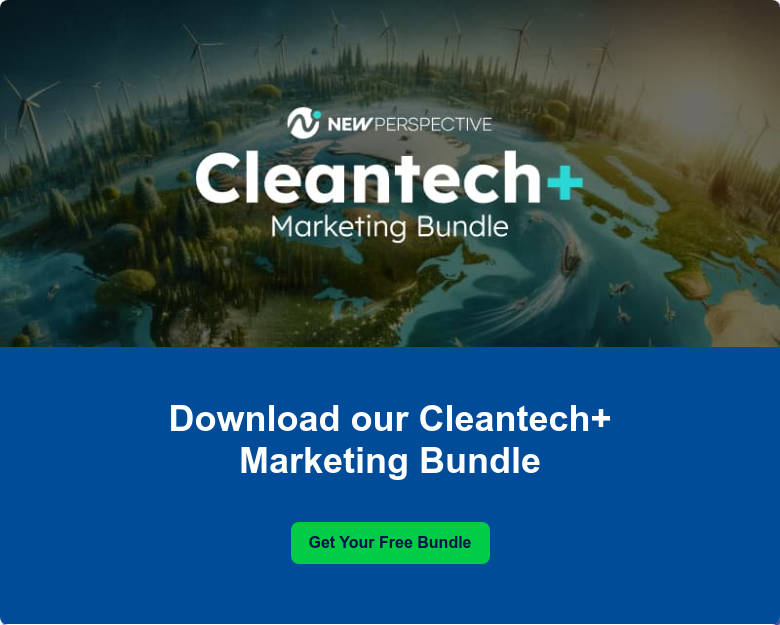
2. Express your mission and vision
Follow your why with your mission as a business. How does it influence your operations and your objectives? What’s your vision of the future?
More on mission
There’s a lot of noise about mission statements — and we’ve seen some doozies. The best mission statements clearly state how a company operates today. Including your core business goals, functions, and approach to solving your customer’s core challenges. Brainstorm with your leadership team and think about these specifics:
- What value do your products and services provide?
- Who is it that you are providing that value for?
- What are the core differentiating factors about your company?
- What is your competitive advantage?
Once you have had the chance to brainstorm with the key players in your organization, distill those thoughts into a concise, focused statement. Certainly, make it memorable. Give it impact. But make sure it can be easily grasped by both employees and customers.
If you need some inspiration, this great article from Biteable offers some compelling examples from high-impact brands. (Another great suggestion from them: Make your mission exciting by bringing it to life through a quick, engaging video to share with your audience. Come to think of it, there’s no reason a brand book can’t be reinforced by a series of terrific videos.)
And vision
Don’t confuse mission and vision statements: they both serve a distinct purpose — and deserve representation in your brand book. But while your mission statement serves as a picture of where your company is now, your vision statement is an aspirational one that captures where you see your company going in the future. While it may address a lot of the same elements as your company’s mission, it approaches them in the future tense. HubSpot collected some powerful vision statements — well worth the look.
3. Identify your target audience
Every brand book should include a clear description of your target audience — a picture of who you want your content and messaging to reach. One of the tools we use to do this is a buyer persona — a semi-fictional representation of your ideal customer that’s based on industry research and your historical knowledge of your current customer and lead data.
You can get a jumpstart on the process with this simple interactive HubSpot feature, Make My Persona. As you create this hypothetical customer, make sure you include these factors:
- Who they are
- Where they are
- Key personality traits
- Their role/s at their company and their decision-making power
- The challenges they are facing and how your solutions help them
4. Voice and tone
How you say what you say matters — and how you as a business ‘speak’ to your target audience can draw them in, or not. This applies to every piece of content and every message, and it’s key to shaping your brand.
Your brand voice defines what you say. Your tone defines how you say it. Voice is something that is considered constant and unchanging in your content pieces — though you can also create a set of “voices” to reflect the author or speaker, such as the CEO versus the research team.
The tone, too, can be adjusted to best fit the context of your messages: the emotional state of the audience, the conventions of each communication channel, or the size and breadth of the content you offer.
The biggest challenge here is to find the voice and tone that are unique to your brand. (And a very relevant aside here: voice and tone aren’t just for your brand book. They need to be part of a much larger content strategy. Learn how to create an effective content creation engine at your business here.)
Here are just a few elements to include in your guidance on voice and tone:
- Your brand’s ‘personality’
- Communication style
- Diction/word choice
- Guidelines and examples (do’s and don’ts)
Put all the relevant information on your voice and tone in the brand book — and include guidelines that everyone can refer to and follow to create content and messaging. This ensures that no matter what’s being created, from a blog to a whitepaper to a social media post to a webinar, there is one central source of truth on how it sounds and how it should be read.
5. Brand assets
Brand assets are the recognizable visual elements that embody your company’s identity. These may be what first comes to mind when you think of a brand book, and you’re not wrong: they’re essential, though not all you need to include.
But getting them right will make all the difference in how your brand is perceived — and received. In Cleantech, it’s critical to differentiate yourself — and brand assets will do a lot of heavy lifting.
Brand assets include:
- Your logo
- Color palette
- Typography
- Photography, icons and graphics
Let’s look at them in depth:
Your logo
Your logo is your logo — it’s the key building block of your brand identity, the primary aesthetic element that identifies you (and no one else). Typically, it combines a recognizable, memorable symbol with your company name (or logotype). Everything about your brand should bear the same consistent representation, though there may be variations depending on the context of use.
Include all the specific rules for using your logo — the do’s and don’ts — in the brand book, such as:
- Proper configuration of elements
- Minimum display size and dimensions
- Rules for dark and light-colored backgrounds
- Appropriate color combinations
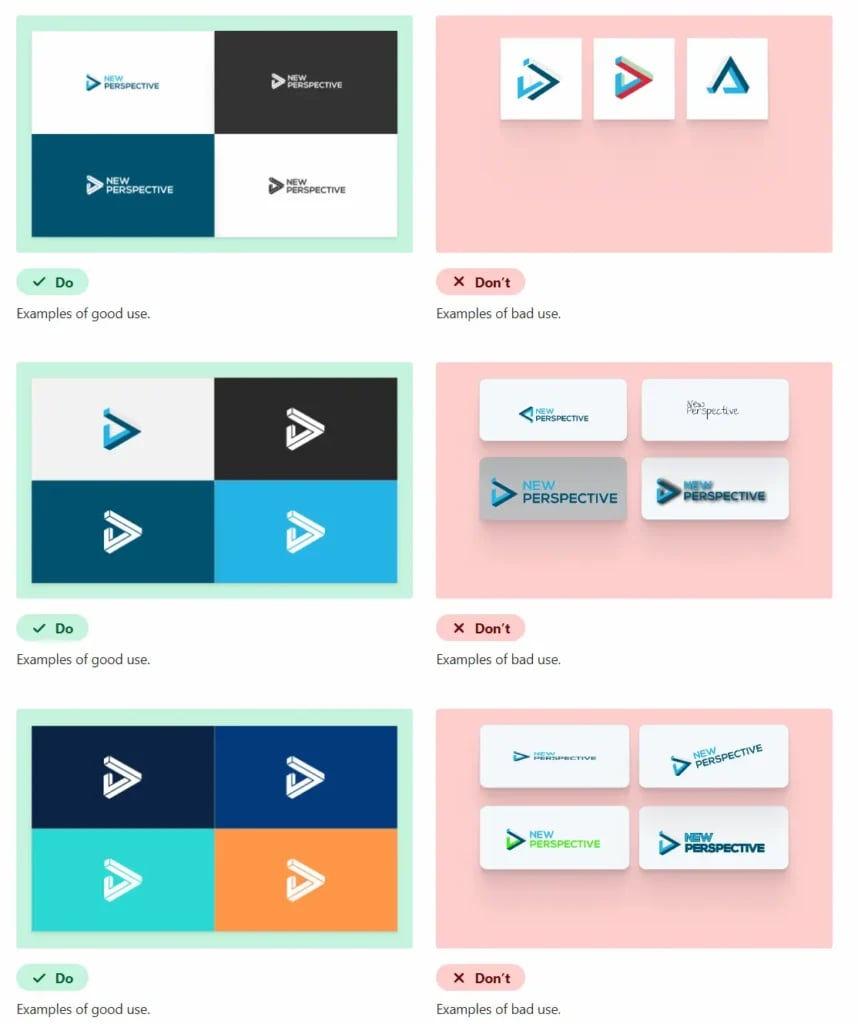
Color palette
Your brand color palette is the family of colors that represent your brand personality. These colors will be used across all of your aesthetic presence, content, and messaging — including your logo, website, and marketing materials (print collateral, social advertisements, etc.).
The palette usually includes:
- Primary color
- Balanced secondary colors
- High contrast accent colors — for CTAs and highlighting points of interest.
Keep in mind that variety doesn’t mean disconnected: whatever the application, you need to keep the colors focused and cohesive. We recommend using no more than 5 selected colors for your base palette, while tints and shades of these base colors can be incorporated for greater flexibility.
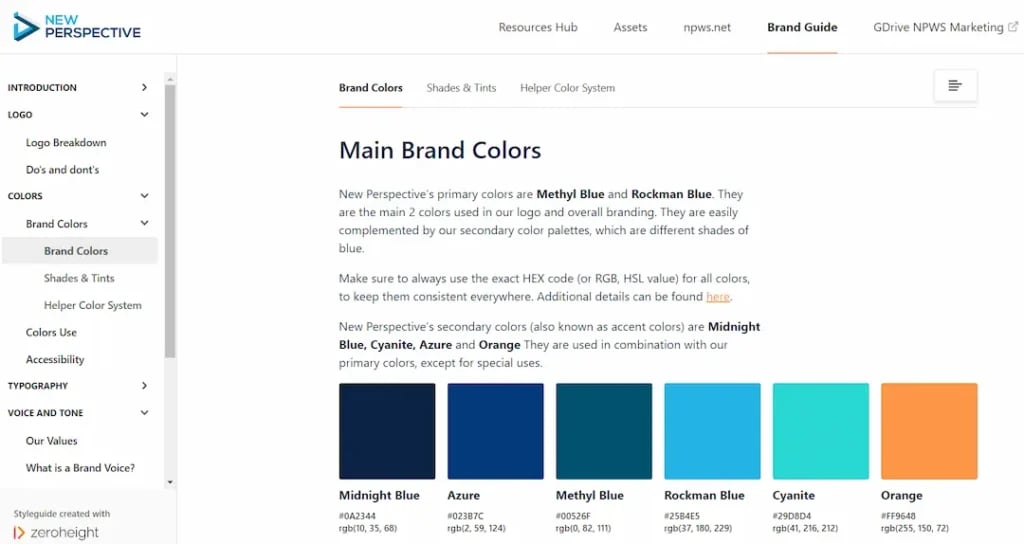
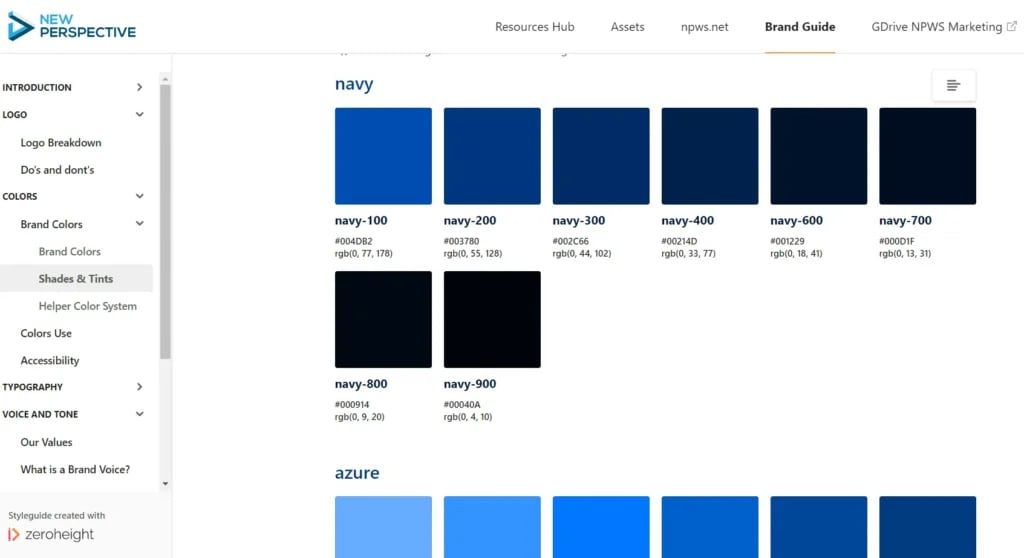
Typography
Typography goes beyond the fonts and font style you choose to represent your business. It’s also the set of visual rules describing how letters and text are arranged to be visually appealing and legible.
In the typography section we recommend including:
- Your primary and secondary fonts (what fonts are used for your headlines, your paragraph bodies, etc.)
- Font weights
- Line heights
- Recommended line length
Looking for great research to help you understand typography 101? Google’s Material Design has great documentation for this.
Photography, icons, and graphics
Think about your industry, and your market: if you had to pick three images that represent it, what would they be? You should apply this kind of consideration to all the visual elements you’re using, including photographs, charts, symbols (icons), and graphics.
Again, including a set of rules to apply in your brand book can clarify a lot of questions — and prevent some questionable choices. You want to give your content creation team the best information you can.
Here’s how we recommend you approach photographs, icons, and graphics:
- Everything needs to reflect your brand aesthetic.
- Make a set of guidelines for what imagery can be paired with what content.
- Make sure the imagery enhances your written content and doesn’t distract or detract from it.
- Make sure the imagery actually reflects the ideas in the content.
- Use original photography (but high quality) whenever you can. Stock photos can seem insincere and inauthentic, which won’t build audience trust.
- If stock is your only option, craft some clear rules on selection and choice, including lighting, subject matter, color palette, etc.
- For icons and graphics, choose a distinct style — such as line icons, 3D, or illustration — and stick to it.
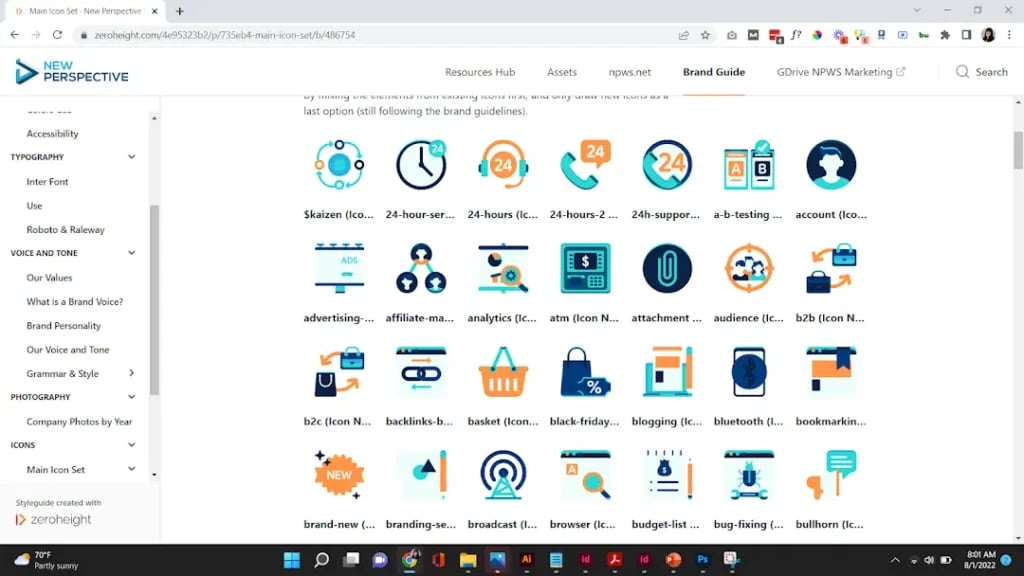
Stay on point with a cleantech brand book
The work you put into creating a solid brand book will pay off in spades. You’ll have an invaluable go-to resource that streamlines the decision-making process and protects the power and cohesiveness of your brand.
In Cleantech, a strong brand is essential to not only building trust with your audience but making your company and product memorable in an increasingly crowded field. By laying out the building blocks of your image, marketing, and content, you can establish an emotional reaction with your target buyers that resonates and deepens with each exposure.
You can identify your position, your niche, and your benefits. Just remember: consistency is strength. As you scale and add more people to your teams, the brand book will keep everyone aligned.
If you’re looking for a fresh angle or additional expertise, consider us an extension of your team. We would love to talk with you about the next steps for optimizing your brand and your marketing strategy.




